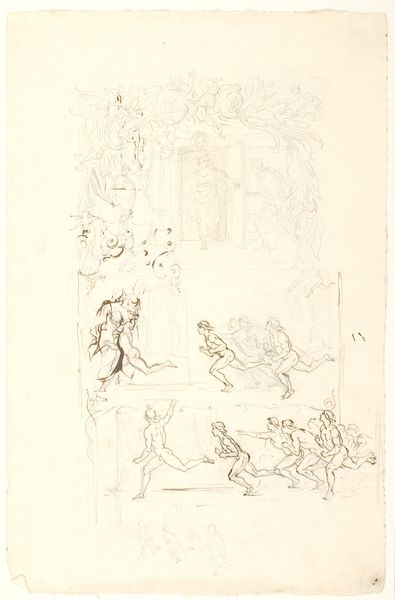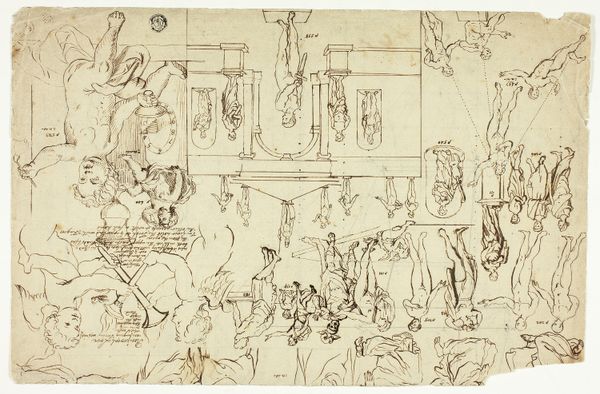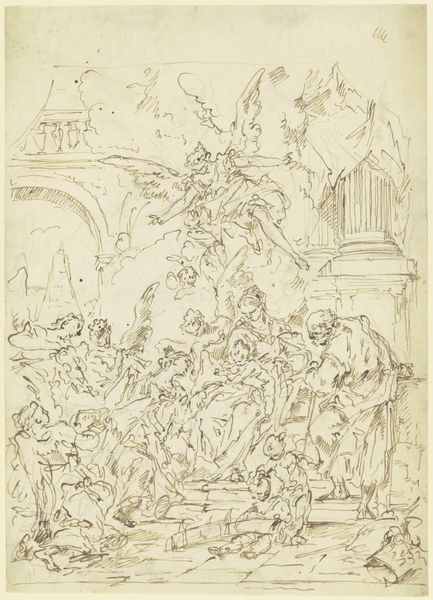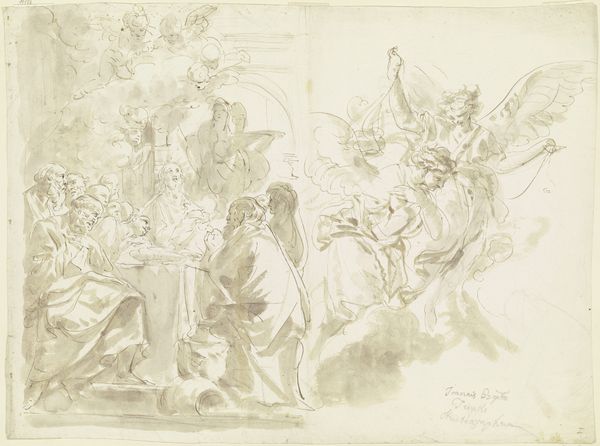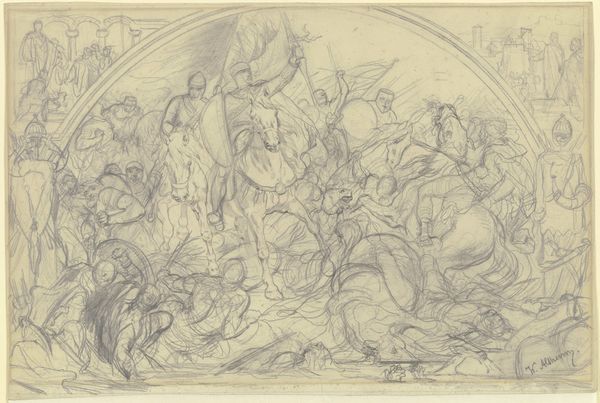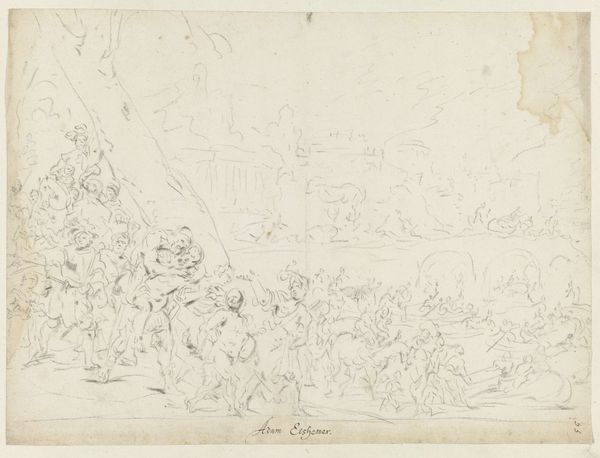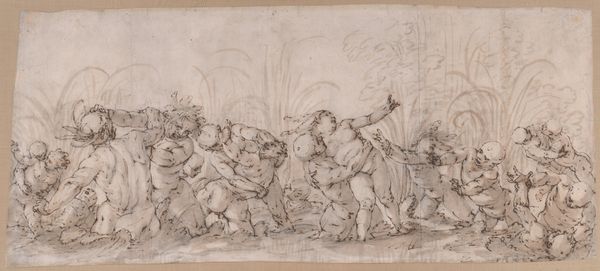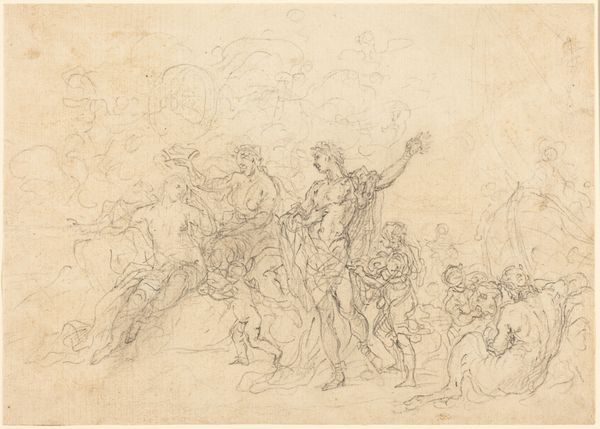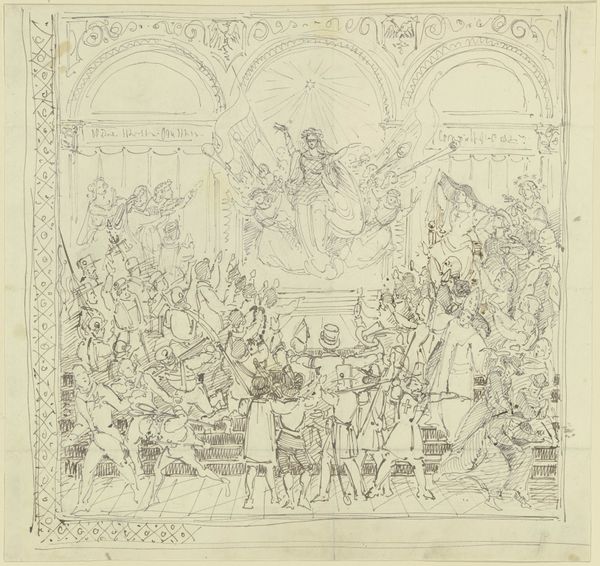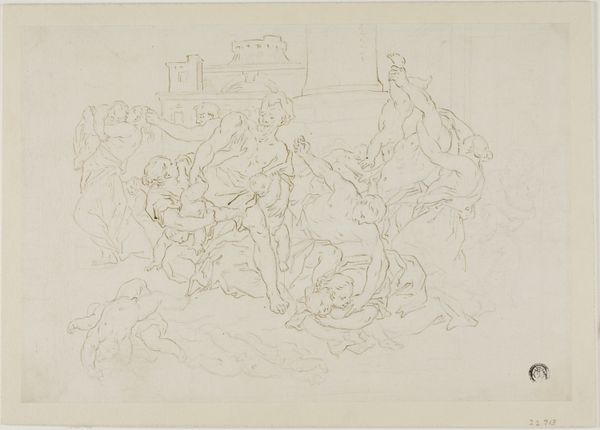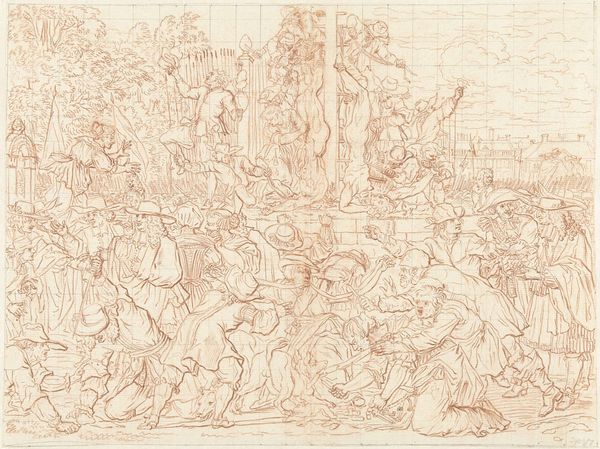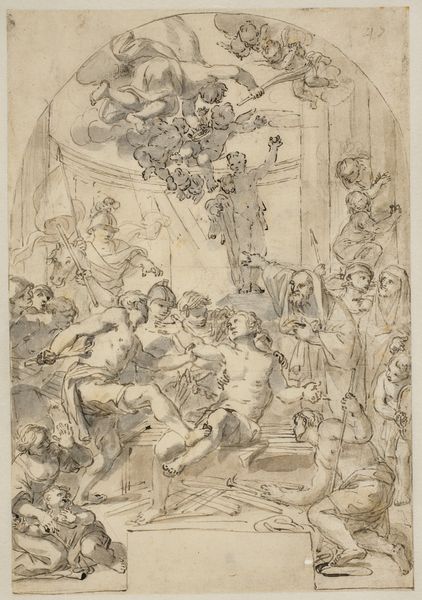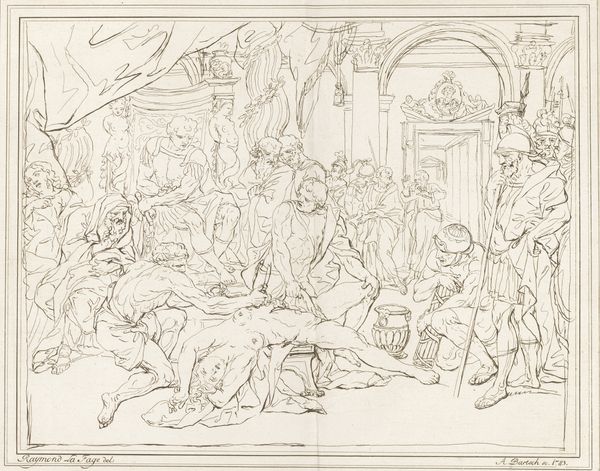
drawing, ink, pen
#
drawing
#
narrative-art
#
baroque
#
pen illustration
#
caricature
#
ink
#
pen
Dimensions: height 295 mm, width 368 mm
Copyright: Rijks Museum: Open Domain
Editor: So, this drawing, "The Grave of John Law, 1720", rendered anonymously in pen and ink, seems quite…chaotic, don't you think? A dark humour infuses it. So much happening! What jumps out at you in this piece? Curator: Chaotic is a kind word! For me, it’s like a fever dream of economic disaster, captured in frantic lines. Imagine the Dutch Republic then, caught in the speculative frenzy, then *bam*, the South Sea Bubble bursts, a real-life ‘get-rich-quick’ scheme gone pear-shaped. You get this… energetic yet tragic theatrical display. A man is on his death bed, while other seem to dance away. Doesn’t it make you wonder, who is dancing and why? What might that portrait on the wall say to this drawing? Editor: It really does feel theatrical, almost like a stage. The figures do seem like caricatures of greed and desperation. The portrait looks somewhat out of place to the scenery around. Could that man have contributed to this drawing’s reality? Curator: Absolutely! These weren't mere portraits; they were symbols, loaded with meaning. Consider the angel figure too! I interpret that portrait on the wall and angel on the top-right to represent the man he once was – not anymore. It’s a biting satire, you feel that sharp tang of social commentary, right? Editor: It's definitely powerful. Before looking at the portrait I wouldn’t have grasped that that figure may have been trying to illustrate the fall from grace, it does come off more like chaos and dancing as if celebrating at that expense. So interesting. I now grasp the symbolic relevance. Curator: See, isn't that the deliciousness of art? The conversation, the peeling back of layers until you can taste the artist's intent, or your version of it! Thank you for unveiling yet another part of this historical imagery for me!
Comments
No comments
Be the first to comment and join the conversation on the ultimate creative platform.
